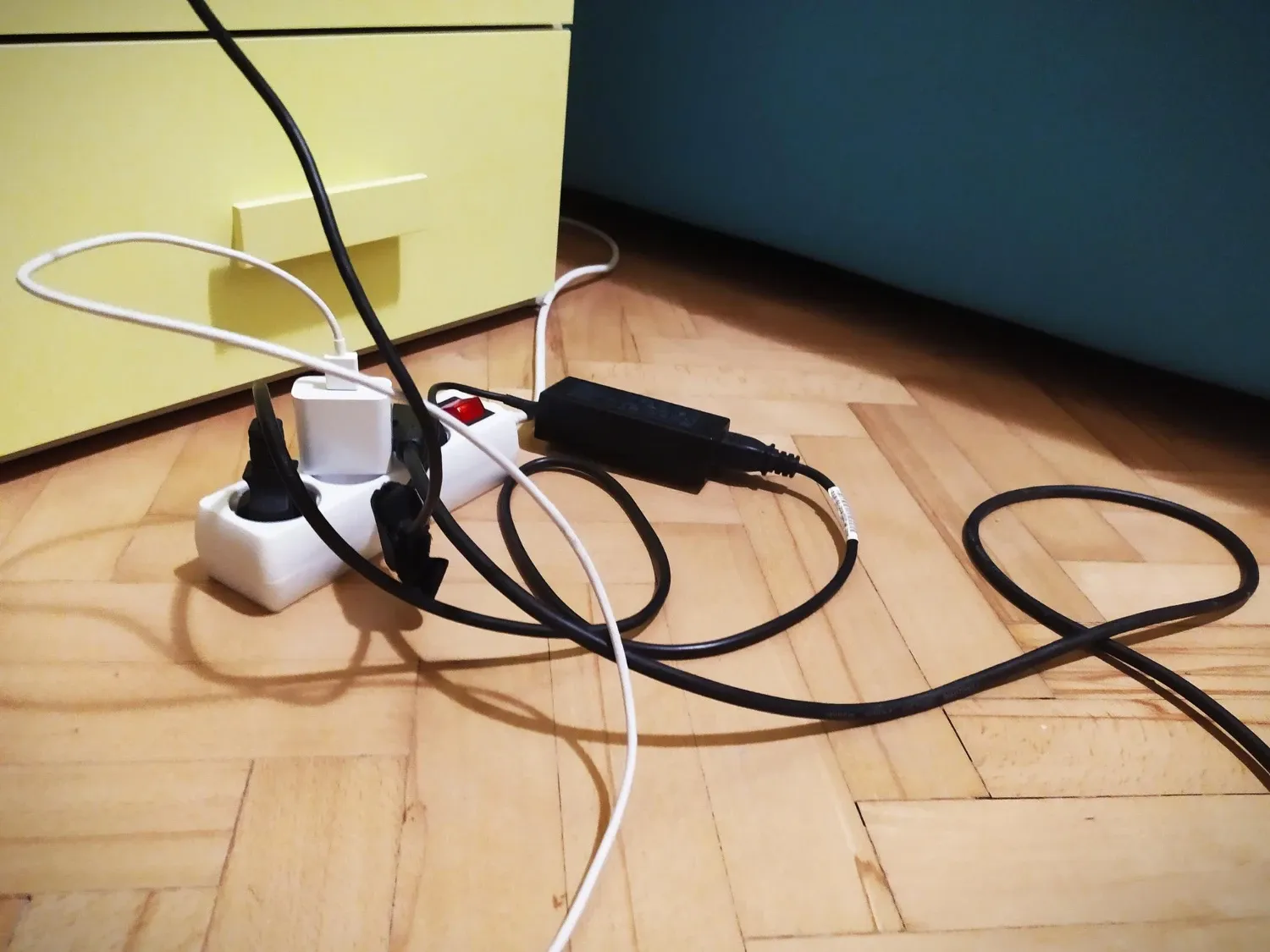Os cabos emaranhados não apenas parecem bagunçados, mas também podem causar danos aos cabos, perda de adaptadores e momentos de frustração quando você precisa desconectar ou substituir dispositivos rapidamente. Ao implementar simples lifehacks de gerenciamento de cabos – empacotar, etiquetar e encaminhar os fios -, você transformará seu espaço de trabalho em uma zona livre de emaranhados que seja funcional e visualmente agradável. Essas técnicas reduzem o desgaste dos conectores, facilitam a solução de problemas e liberam espaço na mesa para que você possa se concentrar no trabalho em vez de se atrapalhar com os fios. Nesta postagem, exploraremos por que a organização dos cabos é importante, as ferramentas necessárias, os métodos de empacotamento e etiquetagem passo a passo e as estratégias de roteamento e manutenção da sua configuração, cada uma delas com dicas práticas e fáceis de seguir.
Por que o gerenciamento de cabos é importante

Um sistema de cabos bem organizado melhora mais do que apenas a estética. Cabos soltos ou emaranhados criam riscos de tropeçar, prendem a poeira e estressam os conectores, levando a sinais intermitentes ou portas quebradas. Para quem trabalha com vários monitores, unidades externas, carregadores e periféricos, uma abordagem estruturada evita que você desconecte o dispositivo errado ou perca pequenos adaptadores. Cabos organizados também melhoram o fluxo de ar em torno dos equipamentos eletrônicos, reduzindo o acúmulo de calor e prolongando a vida útil do hardware. Por fim, uma mesa arrumada projeta profissionalismo – quer você esteja em uma chamada de vídeo ou recebendo clientes, ela indica atenção aos detalhes e disciplina. Ao reconhecer esses benefícios práticos, você se sentirá motivado a adotar dicas de gerenciamento de cabos que proporcionam eficiência, segurança e um ambiente limpo e sem distrações.
Escolhendo as ferramentas certas
Antes de começar a agrupar e rotear, reúna um punhado de acessórios baratos que lhe renderão dividendos a longo prazo. As abraçadeiras de velcro são ideais para agrupar grupos de fios – ao contrário das abraçadeiras de zíper, elas são reutilizáveis e não danificam os cabos. As luvas para cabos e os envelopes em espiral ajudam a reunir vários cabos em um único e elegante conduíte. Os clipes adesivos para cabos e as bandejas embaixo da mesa mantêm os cabos fora do chão e as paredes livres de fios soltos. Para etiquetar, compre uma pequena etiquetadora ou um tubo termorretrátil com código de cores para marcar a finalidade e o destino de cada cabo. Organizadores de cabos magnéticos ou suportes de cabos com peso podem prender cabos individuais em sua mesa para facilitar o acesso. Com essas ferramentas à mão, você terá tudo o que precisa para domar até mesmo o mais complexo ecossistema de cabos.
Técnicas de empacotamento e rotulagem
Comece desconectando e agrupando os cabos por função – energia, dados, áudio e vídeo. Coloque-os paralelamente e remova quaisquer torções ou nós. Use abraçadeiras de velcro para prender cada grupo em dois ou três pontos ao longo de seu comprimento, garantindo uma fixação suave, mas firme, sem beliscar. Para cabos que são trocados com frequência – como carregadores de celular -, use cabos mais curtos e organizadores magnéticos simples montados na mesa. Rotule as duas extremidades de cada feixe: escreva os nomes dos dispositivos ou os números das portas em etiquetas imprimíveis ou coloque tubos termoencolhíveis pré-impressos. Essa etiquetagem de duas extremidades significa que você pode rastrear rapidamente um cabo do computador até o monitor ou a impressora sem adivinhar. Ao reconectar os dispositivos, mantenha os cabos de uso comum ao alcance da mão e os cabos menos importantes guardados, mantendo a acessibilidade e a ordem.
Otimização de rotas de cabos e manutenção

Depois de empacotados e etiquetados, determine os melhores caminhos para seus cabos. Passe os cabos de energia juntos ao longo da borda traseira da mesa, protegidos por clipes adesivos ou por uma bandeja de cabos montada. Passe os cabos de dados – Ethernet, USB, HDMI – através de luvas de cabos ao longo da parte inferior da mesa, evitando as linhas de energia para reduzir a interferência. Nas paredes, use calhas para cabos de baixo perfil que se misturem aos rodapés. Após a configuração inicial, agende uma verificação mensal rápida: aperte os clipes soltos, substitua as etiquetas desgastadas e tire o pó das bandejas de cabos para evitar acúmulo. Se você adicionar ou remover dispositivos, reencaixe os cabos afetados imediatamente, em vez de adiá-los, para que seu sistema nunca volte ao caos. Ao tratar a manutenção dos cabos como um hábito contínuo, você manterá um espaço de trabalho organizado que se adapta graciosamente à medida que sua configuração evolui.
A implementação desses truques o deixará com uma mesa livre de cabos, mais segura para navegar e mais fácil de reconfigurar sempre que suas necessidades mudarem. Com as ferramentas certas, métodos de empacotamento e etiquetagem e roteamento cuidadoso, você manterá um ambiente livre de emaranhados, onde a produtividade e a paz de espírito podem florescer.



